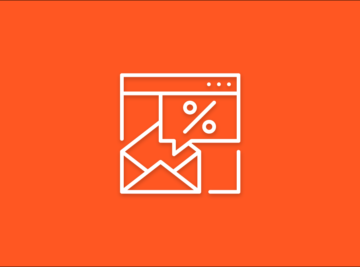You’ve probably heard this a million times before: content matters. More specifically, high-quality content matters. Now that you’ve heard it two more times, let’s actually put some action behind those words.
Every inbound marketing strategy should include high-quality content. It helps establish and boost your credibility, while encouraging your web visitors to become leads and enter your lead nurturing communication.
But in many cases, that is easier said than done. It’s easy to reach a point at which you generate content, but without much success. Have you considered optimizing it specifically for inbound lead generation?
Here are 3 surprisingly simple tips that can help you do just that.
1) Enhance With Visuals
To experienced marketers, the fact that visuals can make or break your efforts is no longer a surprise. We’re a visual society, processing visually-presented information faster and more successfully than simple text.
The lesson for content marketers is simple: blocks of text will not convert readers into leads. To succeed, you need visuals that enhance the text, both summing it up for viewers who do not have the time to read it and visualize the information.
Instead of a paragraph testimonial, consider a video. For statistics, make them easier to comprehend in a graph or chart form. Also remember that infographics can go a long way toward making multi-layered information easy to understand.
The Big Take Away: Visuals enhance both your content and your audience’s understanding of that content, leading to better conversion rates.
2) Create Teasers
One common mistake many marketers make is to treat the content they focus on in isolation: a copywriter creates an eBook, which then gets pushed to the social media manager for promotion. But ideally, everything that leads to the content should be created by the same individual and with the same core purpose.
If you are creating an eBook or whitepaper, you should also write a related blog post that teases the core benefit of the content. This blog post can then link to the whitepaper, which—if gated behind a sign up form—will turn into an active lead generator.
If, on the other hand, the content in question is a blog post that includes a lead-conversion CTA, your teaser should be the text you will use to promote the content on social media.
The Big Take Away: Creating both the content and its teasers in unison means a more focused approach that reduces cognitive dissonance, highlights the content’s core benefit, and ultimately drives conversions.
3) Centralize the CTA
Speaking of core benefit: ideally, each piece of your inbound marketing content should be focused around a single pressure point of your target audience. Your call to action has to be just as central in guiding your target audience through the piece.
Of course, that does not mean your CTA should appear throughout the piece and out of context. It does mean that as you create, write, and design the content, you should evaluate each section based on whether it leads to or detracts from the call to action in the end. Simply put, by the time they get to the end, your readers should see the CTA as a natural, logical next step.
Just as importantly, you should focus on a single call to action. Unbounce’s famous Attention Ratio concept holds true not just on landing pages, but within the content itself: if you offer your audience multiple, different opportunities to convert, their chances of taking neither increase dramatically.
The Big Take Away: A singular call to action, ideally related to the singular pressure point mentioned above, is crucial in driving conversions.
Now, take a few minutes to implement at least one of these tips into your own inbound strategy.
Lead-generating content can make or break your inbound marketing efforts, which is why it’s crucial to create content that actively helps your efforts in growing your business. And sometimes, that process is easier than you thought! The above 3 tips are easy to implement and can go a long way toward ensuring inbound marketing success.









